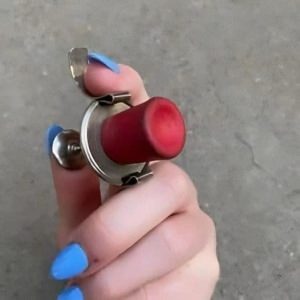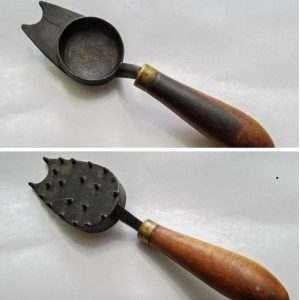If you’ve ever spent countless hours tinkering under the hood, wrench in one hand and grease on the other, then this small but mighty component might just spark a wave of nostalgia. It’s not glamorous or high-tech, but it was the heartbeat of classic cars and motorcycles for decades. We’re talking about the contact breaker — an unsung hero in the world of mechanical ignition.
So, the big question is: Do you recognize it instantly? Or are you here to discover one of the most underrated yet essential parts of automotive history? Let’s dive into the details of this iconic device.

What Is a Contact Breaker, Really?
A contact breaker, often referred to as “the screw” in some old-school garage circles, is a fundamental part of traditional mechanical ignition systems. Before the advent of electronic ignitions and engine control units (ECUs), this tiny device was the key to making an engine roar to life.
Situated inside the distributor, the contact breaker acts as a mechanical switch that opens and closes in sync with the engine’s rotation. As the camshaft spins, it causes the contact breaker to open and close at precisely the right moment. This motion disrupts the current flow in the ignition coil, and that disruption is what produces the spark necessary to ignite the engine.
It’s straightforward, mechanical, and downright ingenious.
Video: Contact Breaker Point Working
The Spark of Life: How a Contact Breaker Works
The contact breaker itself doesn’t generate the spark. Instead, it meticulously controls the timing. Think of it as the conductor of an orchestra, directing the ignition coil when to release a surge of high-voltage electricity to the spark plug.
When the breaker points are closed, electric current flows through the ignition coil, creating a magnetic field. As the camshaft rotates and opens the points, that magnetic energy rapidly collapses, releasing a high-voltage spark that jumps to the spark plug. The resulting ignition lights up the air-fuel mixture in the combustion chamber, causing the engine to fire.
No complex electronics, no sensors — just the pure, rhythmic dance of metal components working in harmony. Beautifully simple and remarkably effective.
Why the Contact Breaker Mattered So Much
In the realm of classic cars and vintage motorcycles, the contact breaker was as crucial as the engine itself. It was prized for its simplicity, reliability, and the fact that almost anyone with basic mechanical skills could maintain it.
Here’s why it was so valued:
- Precision Timing: A well-tuned breaker meant your engine fired precisely when it needed to, ensuring smooth operation.
- User-Friendly Maintenance: You could clean, file, or adjust the points without needing specialized equipment. Just a feeler gauge and a bit of patience would do the trick.
- No Electricity Dependency: Unlike modern ignition systems, it didn’t rely on complex electronics, making it resilient and versatile.
- DIY Friendly: Back then, being a car enthusiast often meant being a hands-on mechanic. The contact breaker was a key part of that culture.
For those who loved to get their hands dirty and truly understand their machine, the contact breaker represented the golden age of do-it-yourself automotive care.
The Downside: Why Contact Breakers Faded Out

While contact breakers were groundbreaking for their time, they had their limitations. As technology advanced, they slowly became obsolete, replaced by more efficient systems.
Here are a few reasons why they were eventually phased out:
- Wear and Tear: The contact points were prone to burning and wearing down over time. Regular maintenance was a must.
- Frequent Adjustments: The gap between the points needed constant adjustment to maintain optimal performance.
- High RPM Issues: At faster engine speeds, the system became less accurate due to point bounce, causing misfires.
- Electronic Alternatives: By the late 1970s and early 1980s, electronic ignition systems became the norm, offering better efficiency, reliability, and minimal maintenance.
Despite their flaws, contact breakers remain cherished by vintage car and motorcycle enthusiasts who appreciate the hands-on experience and the nostalgia they evoke.
Reviving the Classic: Tuning a Contact Breaker
If you’re restoring a classic ride or simply want to feel that old-school mechanical connection, tuning a contact breaker is a must. Here’s how you can breathe life back into one of these classic devices:
- Clean the Points: Even a small amount of corrosion can disrupt the spark. A light sanding with fine-grit paper often does the trick.
- Set the Gap: Use a feeler gauge to adjust the space between the points. The correct gap ensures proper spark timing.
- Measure the Dwell Angle: This indicates how long the points stay closed. A dwell meter can help you get it just right.
- Timing Adjustment: Once the gap is set, use a timing light to ensure the ignition fires at the right moment.
The process is as much an art as it is a science, but mastering it gives you a unique connection to your vehicle — a feeling that modern systems simply can’t replicate.
Why True Gearheads Still Love Contact Breakers
Video: Contact breaker point working in slow motion
Despite being replaced by modern technology, contact breakers hold a special place in the hearts of classic car enthusiasts. They remind us of a time when driving wasn’t just about transportation — it was about understanding your machine inside and out.
The sight of a worn contact breaker can instantly transport a seasoned mechanic back to the days of weekend tune-ups and spirited debates about the best way to set the gap. Even today, in garages and vintage car clubs, the knowledge of how to tune a contact breaker is considered a badge of honor.
Conclusion: A Piece of Mechanical History That Lives On
The contact breaker may be considered obsolete by today’s standards, but its legacy lives on in the memories of those who spent countless hours tweaking and fine-tuning these small yet essential components. It represents an era when being a car owner also meant being a mechanic — when driving wasn’t just about convenience but about passion and pride.
So, if you’re one of those hands-on legends who recognize a contact breaker at a glance, give yourself a nod of respect. You’re part of a unique tribe — a group that understands the true soul of a machine.
And if you’re new to the concept, take a moment to appreciate the ingenuity and craftsmanship that kept engines firing for generations. Because sometimes, the simplest parts hold the most profound stories


